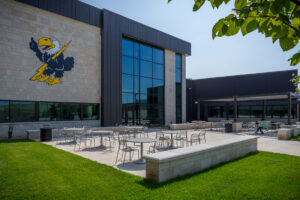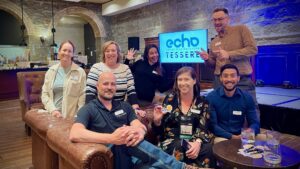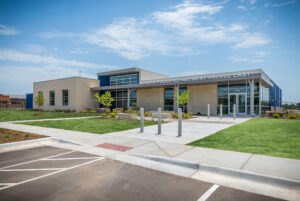Good master plans provide a visionary roadmap to get a facility from where it is to where it wants to be, but great master plans can galvanize and inspire entire communities. At smaller institutions, being honest about the feasibility and timing of projects due to space, budget, and bandwidth limitations can easily stifle a blue-sky approach to planning, but they don’t have to! In this conversation, Gene Peacock, Director at Zoo Boise, and members of the Zoo & Aquarium Division at TESSERE Architecture, Dale Stafford, Landscape Architect, and Jamie Ohrt, Intern in Architecture, discussed Zoo Boise’s innovative and comprehensive Master Planning process.
Key Innovations and Takeaways:
Value-Driven Decision Making is Key
A strong commitment to conservation is integral to Zoo Boise’s identity, and this has driven decisions at all stages of planning. Even in the initial Request for Proposals (RFP), Zoo Boise expressed its expectation that their chosen designer would partner with them in developing an achievable master plan that would authentically advance their mission to “inspire and involve their community in the conservation of wildlife worldwide.” The Zoo & Aquarium Division demonstrated a shared commitment and understanding, and together, the teams iterated on a master plan that would do just that. Alongside community input, site realities, and budget factors, alignment with conservation initiatives was a decisive element in species selection. All those incorporated have, or will have, a connection to a local or global conservation project, and most are adapted for the Boisean climate, reducing energy loads in cooling or heating, and extending access to entire outdoor and indoor habitats.
Uniquely, Zoo Boise has also adopted a standard practice of donating 10% of a project’s cost to conservation. For example, in a project budget of $1.5 million, $150,000 is allocated to conservation. TESSERE Architecture incorporated this factor in the master plan’s Opinion of Probable Cost, which has proved a vital foundation for fundraising. Because it is so core to Zoo Boise’s identity, donors don’t question a percentage of their donation to an exhibit going to conservation. In many cases, this only reinforces their support.
You will find in many zoo and aquarium mission statements references to the conservation of wild animals and wild places. You will also find in many zoos and aquariums that conservation is a set of projects or initiatives rather than a fundamental organizational value that drives decision-making behind closed doors. In your organization’s next decision – be it an animal acquisition, investment, event design, path resurfacing, planting plan, building renovation, or office supply order – what happens when you consider the conservation connection or implication?
Phase Projects to Address Critical Needs First
In the phasing of their Master Plan, instead of starting with a project that would bring a new animal to the zoo, Zoo Boise chose to focus on critical needs first. Phase 1 includes new, state-of-the-art homes for the zoo’s beloved red pandas, penguins, and snow leopards and an expanded education center to facilitate its growing education programming. To some, this may seem an obvious choice. But industry secret – it’s not. Zoo Boise’s Master Plan incorporates many new elements that staff, community, and donors are eager to see and support. It’s often tempting to defer addressing existing habitats in exchange for launching a new Master Plan with a passion project or an exciting new species. Instead, Zoo Boise is affirming its foundational commitment to animal wellbeing and education, galvanizing its communities and donors in its own way.
It’s a valuable exercise in any form of strategic or master plan – is the plan and its approach grounded in organizational values, responsive to data-driven needs, and true to its intended long-term outcome? Or is it influenced by personal preferences and popular trends?
Change Is to Be Expected; Share the Why
While in the schematic design of Phase 1, the Zoo Boise and TESSERE teams had a long and challenging conversation about the continued integration of a new sloth bear habitat, as specified in the Master Plan. The zoo is home to Paji, an iconic and much-loved bear, and encounters with her raise over $60,000 each year for Wildlife SOS. However, Paji is an aging bear under medical treatment, and it would likely be years before the completion of a new habitat. Ultimately, Zoo Boise is unwavering in their commitment to Paji’s health and well-being but will not be home to future sloth bears despite having already revealed the Master Plan in its entirety.
This isn’t uncommon. The best master plans are dynamic roadmaps, not carved in stone. More elements of the plan will change, and Zoo Boise has found success in being transparent about the reasons behind these changes as they arise. In this example, the community is sad not to see sloth bears in Zoo Boise’s future but understands the zoo’s decision is grounded in its commitment to animal wellbeing.
Announcing an organization’s future plans may feel like a promise to staff and communities, but bold leaders acknowledge that evolving information and shifting circumstances can necessitate change. By maintaining transparency and sharing the reasons behind a decision, leaders can build trust and inspire their communities to embrace change.
Your Guests Are a Force for Good
There is great intentionality behind Zoo Boise’s Master Plan, and by curating an experience Boiseans are proud to support, they have “turned the act of visiting a zoo into a conservation action.” In implementing Phase 1, the Zoo Boise team collaborated with TESSERE Architecture’s interpretive planning team to design an interpretive experience that weaves guests into the story and empowers them to be agents of change for wildlife beyond their visit. Elements will cultivate empathy through play and perspective-taking and connect the animals’ stories with their own, providing tangible actions guests can take to “keep their world wild.” For instance, while a guest to Zoo Boise may support Silvery-Cheeked Hornbill conservation through donations, they can also protect habitats for cavity-nesters in Idaho by caring for snags.
When mobilized, zoo and aquarium communities are a force for change. To date, Zoo Boise and its guests have generated more than $3 million for the conservation of animals around the world. By empowering these same guests to take caring action for wildlife and wild places in their own backyards, Zoo Boise is bringing conservation home.
To see more of Zoo Boise’s Master Plan, visit Zoo Boise’s website and TESSERE Architecture’s Project Page.




